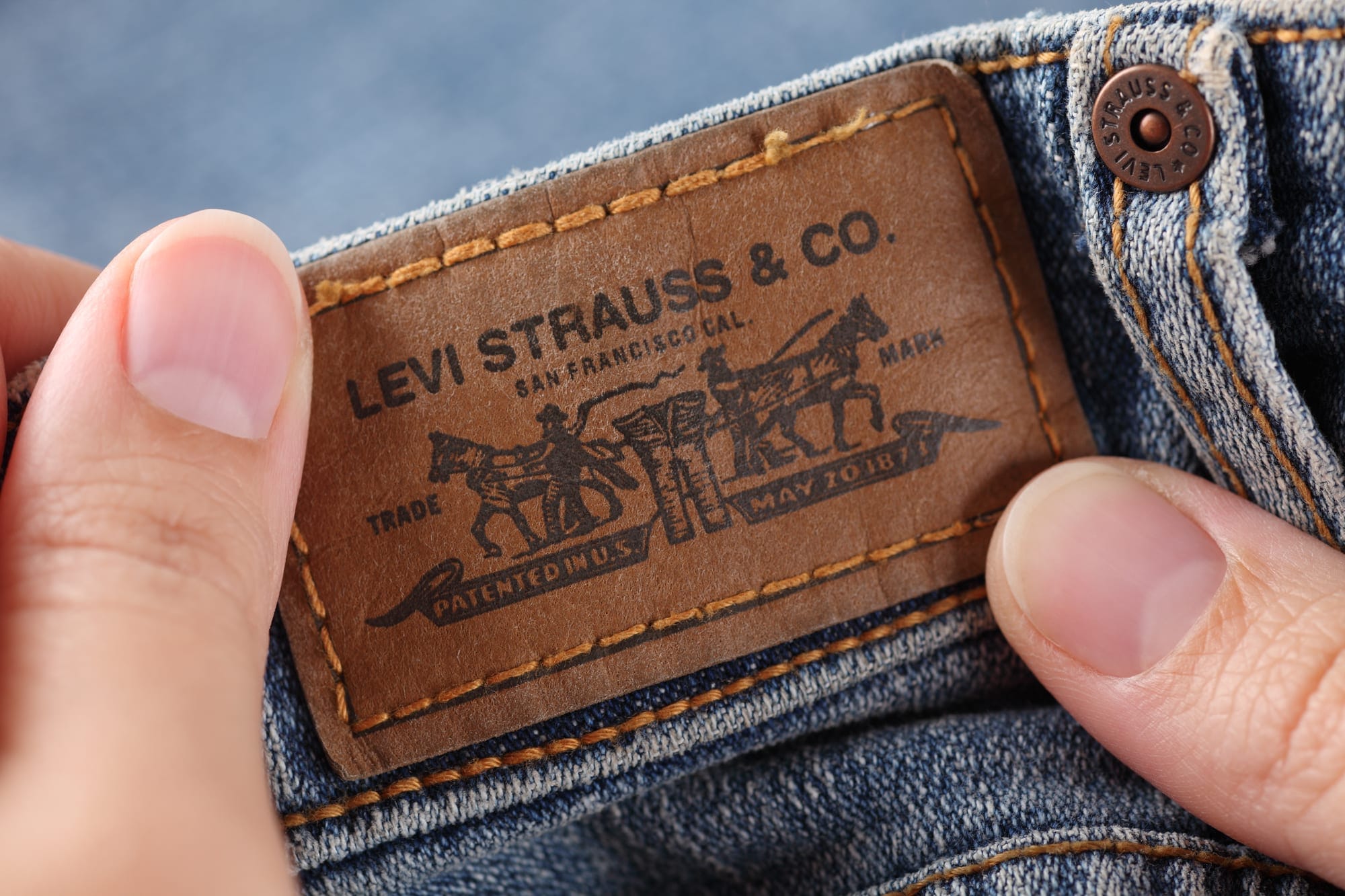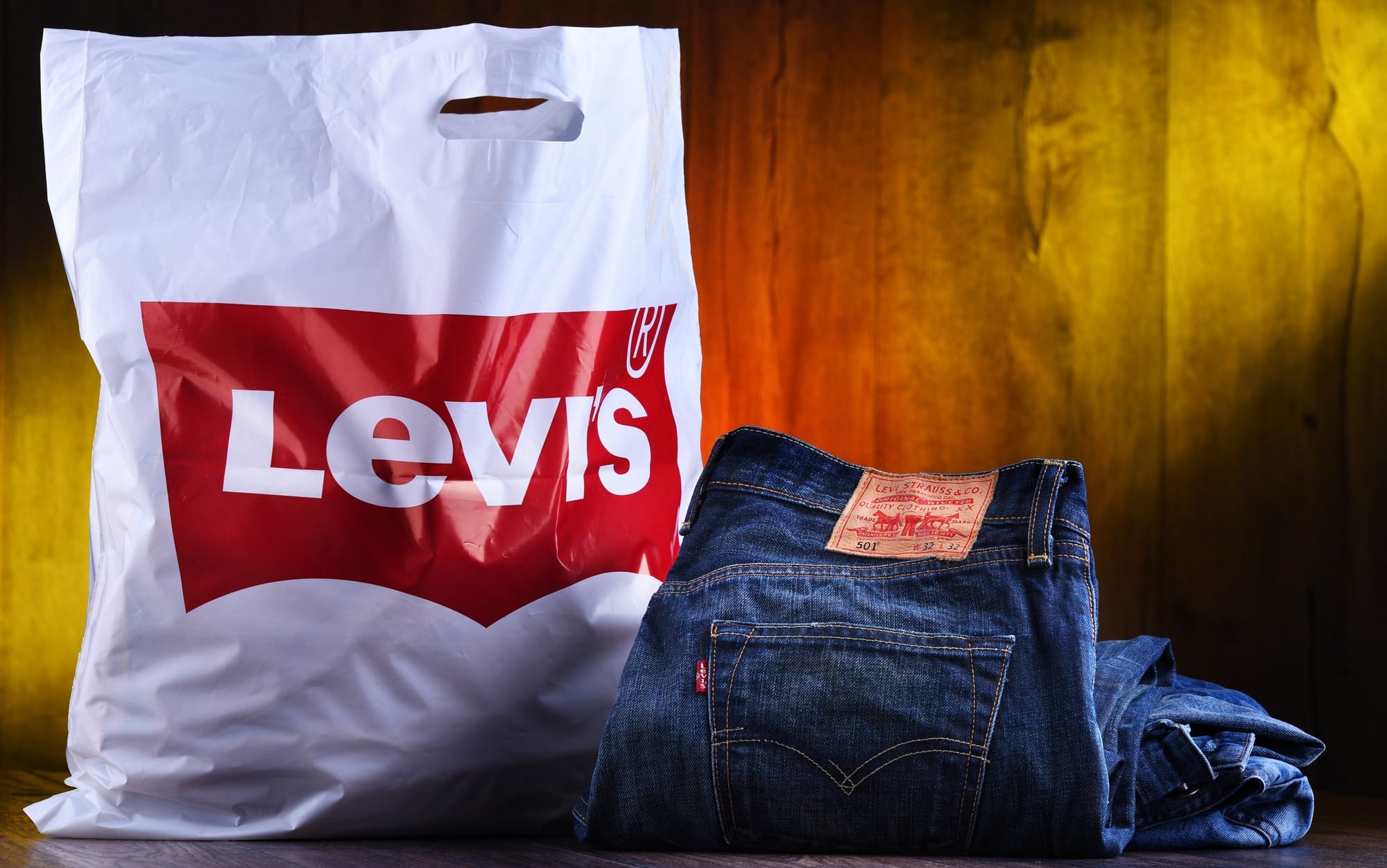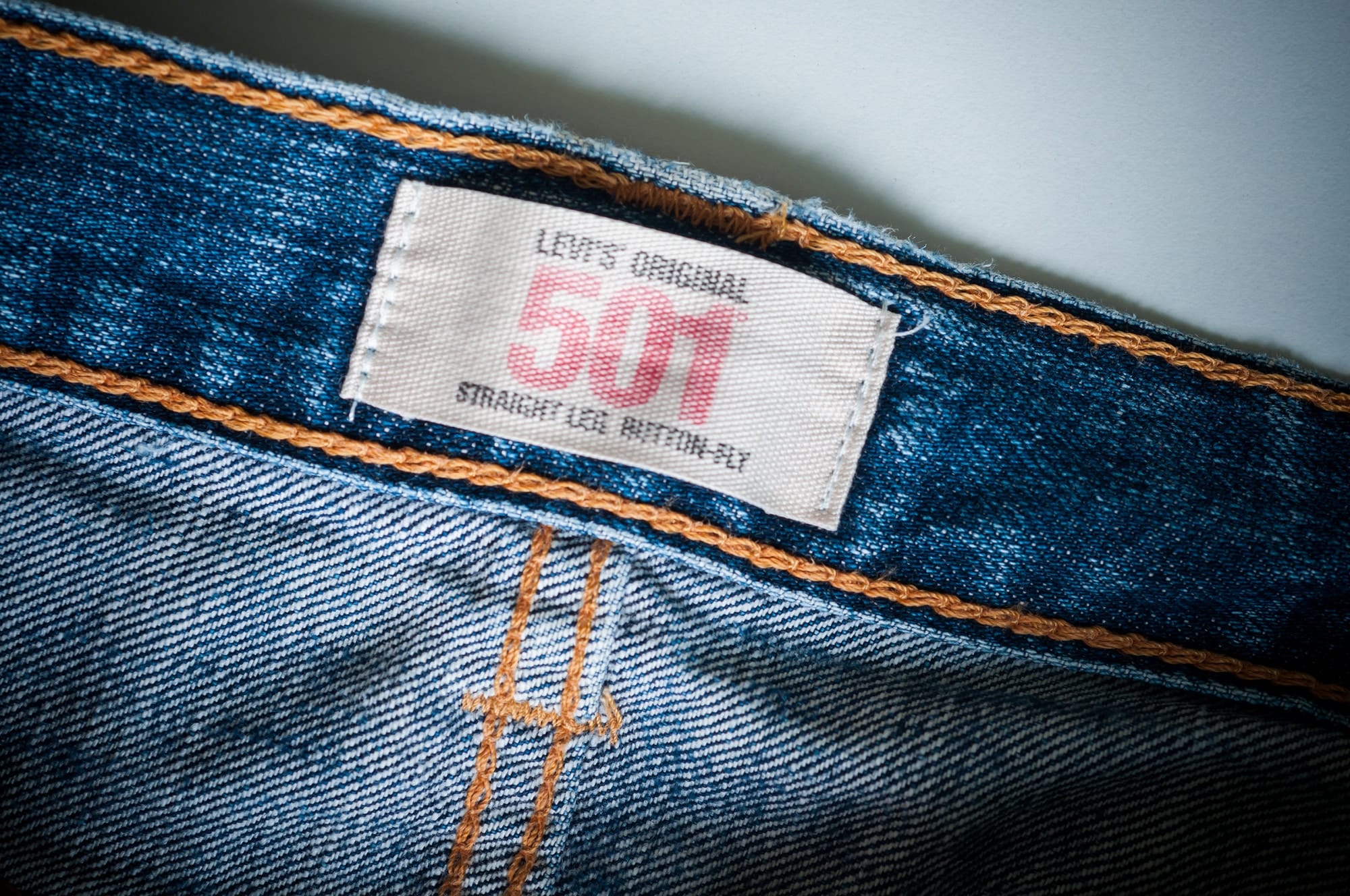It is a fact universally acknowledged that a person simply must be in possession of at least one amazing pair of jeans. If you are such a person, chances are that you have heard the name LEVIS. If, however, that is not the case, consider this LEVIS SWOT Analysis as your one-stop guide to all things fashion or, more accurately, all things LEVIS. Also, make sure not to miss out on our PESTLE analysis of Levi's.
Levi’s is one of the four main brands, including Dockers, Denizen, and Signature, owned by the famed clothing business Levi Strauss & Co. The company, named after its founder Levi Strauss, was established in 1853 and is currently headquartered in San Francisco, United States.
The company’s founder, Levi Strauss, arrived in San Francisco from Bavaria and eventually opened a dry goods company there. During that time, Strauss uncovered a need among the working class, clothes that were made to withstand harsh conditions.
To fulfill this need, he joined forces with a tailor named Jacob Davis, and together they manufactured the first ever “blue jeans'' in 1873. These were essentially waist overalls manufactured by combining copper rivet reinforcements with tough denim.
Eventually, this trend of blue jeans took a life of its own; no longer limited to American workers, they were worn by miners, cowboys, rebels, rock stars, and even presidents. Hence the company transcended its original purpose of making clothes for workers and instead became a part of everyone's lives.
Levi’s equally serves men, women, and children with the best looks using its amalgam of products which include belts, skirts, shirts, hats, jackets, denim jeans, pants, and jackets, etc.
While the brand’s journey has not always been particularly smooth, it has managed to gain and maintain its reputation as one of the most famous fashion brands in the world, so much so that Levi’s has become a buzzword.
Levi’s tracking of shifts in consumer retail behavior and use of advanced marketing techniques has made it immensely popular all over the globe.
Levi’s growth from one man’s vision to one of the leading fashion brands throughout the world warrants a closer look at the brand. To that end, plotting a SWOT matrix for the company becomes necessary to grasp what makes the brand what it is.
However, it would be best to take a look at the SWOT template before proceeding to the actual analysis, in order to get a better idea.

The term SWOT is an acronym that stands for strengths, weaknesses, opportunities, and threats. The first two are internal factors whereas the last two represent the company’s external environment.
For further clarity, internal factors occur internally, i.e., within the company, and can therefore be controlled by the entity. On the other hand, external factors occur outside the enterprise and cannot be controlled by the company. Such factors need to be understood and consequently catered to by the brand.
For instance, the company’s strong supply chain is its strength; however, the ever-increasing competition in the fashion industry serves as a threat to the company, one that needs to be recognized and catered to accordingly.
A detailed SWOT analysis may serve to make things, slightly, if not completely, clearer.

What are the biggest strengths of LEVIS?
For any brand to gain and maintain a prominent position in the business industry, it must have a carefully curated set of strengths that are uniquely its own. However, that may be easier said than done as these strengths not only need to be created but must also be maintained. As with any SWOT example, the company’s strengths are always of paramount importance.
Following that trend, listed are some of the greatest strengths that make LEVIS one of the world’s most popular fashion brands.
Strong Global Presence
With a vast abundance of retail stores that cover various geographical segments, Levis has managed to establish a strong global presence. In fact, the brand has 327 retail stores in Asia, 356 in Europe, and a whopping 359 stores throughout America.
Moreover, the brand’s products are available worldwide in 110 countries. This vast presence has, in turn, helped build a strong image of the company across the globe.
Strong Supply Chain
With its 60 manufacturing units spread out in the United States and a further 25 such units worldwide, Levis has established a strong supply chain network.
Moreover, besides its manufacturing units, Levis also has a system in place to reach its customers, which utilizes various distribution and outsourcing platforms. An example of such a network is the pairing of retail stores and the Internet.
These factors contribute to the brand’s strong supply chain network that may allow it to enter even newer markets over the years.
Keeping Up With The Latest Trends
Yet another strength of Levis lies in its apt use of the latest marketing trends, whereby it utilizes retro songs for its TV commercials and social media campaigns. Levis utilizes celebrity endorsements by famous individuals such as Jaden Smith, Hailey Bieber, and Naomi Osaka.
To increase its sales in India and particularly attract more women towards its products, Levis chose the renowned actress Deepika Padukone. Hence, Levis effectively uses celebrity endorsements as strategic tools to grow further.
Target Market and Product
Levis’ trademark product, i.e., its blue denim jeans, is aligned with a youthful image, which appeals to the young generation. This strength is particularly important as the young generation makes up a particularly financially lucrative target market.
Moreover, its use of popular celebrities with this generation is another brilliant move on the company’s part. These strategies help Levis maintain a strong positive image in front of its target market.
Brand Name
Not only is Levi's one of the oldest brands for clothing, but it also has a popular brand name that has become easy to recall over the years.
Skilled Workforce
Yet another major strength of Levis is its highly motivated and skilled workforce. This is possible due to the brand’s constant efforts and investments into not only training its employees but also motivating them to do better.
Automation
While most companies manage to offer good quality products, very few are able to deliver the same quality over time consistently.
Levis managed to crack the code on this problem by automating a number of its activities which allowed it to deliver high-quality products consistently, leading to greater reliability and customer satisfaction.

What are the biggest weaknesses of LEVIS?
While there is no denying that Levis has been performing brilliantly, however, as is the case with any company, this brand, too, has its own share of weaknesses. Identifying and working towards remedying these weaknesses could change the game altogether for the company.
Forged Products
Perhaps one of the greatest challenges and weaknesses for Levis has been that its products are copied and sold at lower prices. The spread of low-quality, forged products is a major reason for the company’s negative image that may, in turn, impact its sales.
Dependence on Contract Manufacturers
Yet another weakness of the brand lies in its overdependence on independent contract managers for its raw materials and products. This dependence could very well put its well-established supply chain network at risk.
Dependence on Few Wholesale Customers
Levis also majorly depends on several wholesale customers for most of its revenue. In fact, as of 2020, Levis’s wholesale department generated $2.5 billion, and the direct-to-customer sales generated $1.7 billion.
This is why any problems with its selected wholesalers could leave the company vulnerable and affect its sales or profits.

What are some of the greatest opportunities for LEVIS?
Fortunately, Levis has some opportunities that it can avail to improve its performance further and increase profits. A number of those opportunities are listed here.
Low Labor Cost
Like other fashion brands, Levis can also avail itself the opportunity of moving its manufacturing units to regions that offer low-cost labor. Such countries include the likes of Pakistan, India, the Philippines etc.
By moving its production to such countries, Levi's can not only reduce the cost of labor needed to manufacture its goods but also subsequently increase its profits.
Online Retail Platforms
The explosive growth of online retail platforms, particularly during the pandemic, paired with Levis’ own investments in online channels can serve as a lucrative avenue to attract new customers.
The brand can use big data analytics to attract, get to know, and maintain strong relationships with its customers.
Casual and Western Wear Trends
As more and more consumers jump on the casual and western wear bandwagon, the market for Levis’ products is growing at a fast pace.
Moreover, such trends allow the brand to add to its offerings and perhaps even explore new revenue streams.
E-Commerce Business Models
Perhaps another rather attractive opportunity for Levis is the growth of electronic commerce and social media business models. Such models can allow Levis to further expand to international markets by locating and maintaining relationships with suppliers and logistics companies local to those countries.
Moreover, using social media platforms can allow the brand to expand to newer markets at a significantly lower cost. Such platforms can also provide insights into consumer preferences and purchase behavior.

What are the greatest threats to LEVIS?
While there is no doubt that the name Levis inspires confidence, it is also true that the brand must keep an eye on and protect itself against external threats that exist or may arise at some point in time.
Some of those threats are as follows:
Product Substitution
Brand loyalty may well be a thing of the past for most customers as the number of options available to them is increasing at an exponential rate where multiple brands are offering more of the same, usually at lower prices.
Levis, too, must face this reality and work towards differentiating its products from other similar offerings if it intends to hold its position in the market.
Changing Trends
Keeping up with the consumers' ever-present need for something different, trends in the fashion industry are perhaps the most volatile compared to other businesses.
These constantly changing trends require a constant investment of resources by brands to stay updated and, even more so, to lead the market. Levis, too, must keep this in mind to stay in the game.
Competition
Over the years, the fashion industry has proven itself to be a particularly lucrative source of earning which is why the number of businesses entering the industry has grown exponentially.
This growth presents a greater number of competitors for Levis both locally and internationally. Its competitors include the likes of Gap, Wrangler and Calvin Klein.

LEVIS SWOT Analysis: Final Thoughts
Hopefully, by the time you have read through this analysis, you will have a relatively clear idea of how a SWOT analysis is done.
Moreover, if the above information is any indication, it is safe to say that while Levis is a force to be reckoned with, there are still certain internal vulnerabilities that may need to be tackled before they present a real issue.
Moreover, it is also imperative for the company to keep an eye out for and accordingly prepare to defend against threats that may arise over time in order to hold its ground and prosper.
If Levis chooses to use available opportunities to overcome its weakness and perhaps plan for looming threats, it has the potential to reach even greater heights. However, choosing to look the other way may well lead to a rather sad end.
If this article managed to tickle your curiosity about the fashion industry, feel free to look at a SWOT analysis of the fashion industry to get a more holistic idea of the process.









